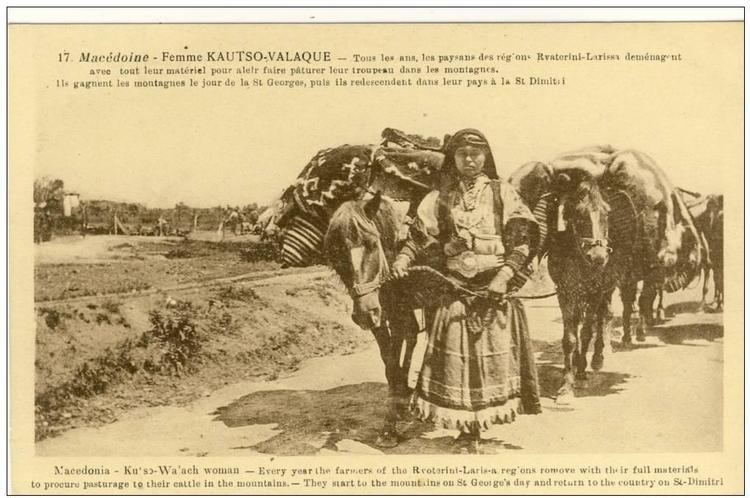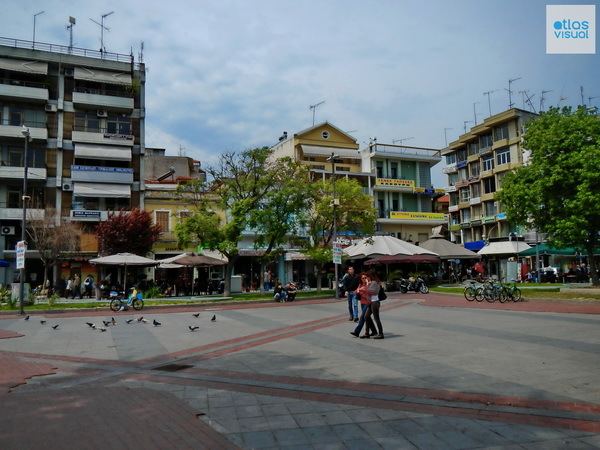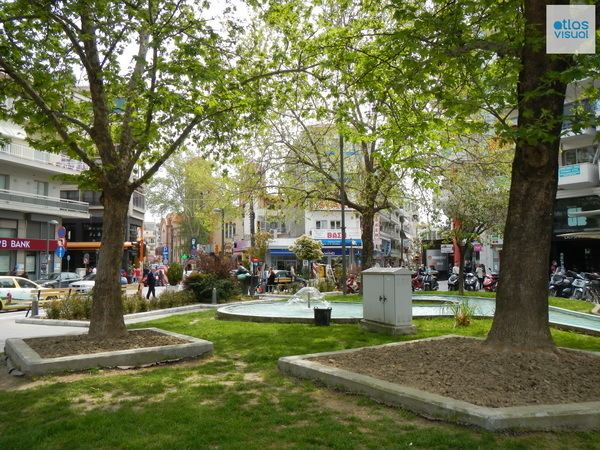Country Mayor Savvas Chionidis | Area 681.863 km2 | |
 | ||
Map of Katerini
Katerini (Greek: Κατερίνη, Kateríni, [kate'ɾini]) is a town in Central Macedonia, Greece, the capital of Pieria regional unit. It lies on the Pierian plain, between Mt. Olympus and the Thermaikos Gulf, at an altitude of 14 m. The town, which is one of the newest in Greece, has a population of 85,851 (according to the 2014 census). It is near the city of Thessaloniki, Greece's second largest city, which has been beneficial for Katerini's development over recent years. Katerini is accessible from the main Thessaloniki–Athens highway GR-1/E75 (with two interchanges near the town) and the Egnatia Odos to the north. It is served by both Intercity and local trains on the main railway line from Athens to Thessaloniki and there is a comprehensive regional and national bus service with its hub in the town.
Contents
- Map of Katerini
- Tourist attractions in paralia katerini greece
- Katerini greece macedonia atlasvisual
- Name and history
- Administrative division
- Climate
- Local Delicacies
- Local Government
- Economy
- Agriculture
- Tourism
- Local transport
- Road transport
- Rail links
- Local communities
- Religion
- Immigrants
- Football
- Other Sports
- Sports
- Music
- International relations
- References

A popular tourist destination in northern Greece, Katerini is close to the sea (6 km) and to several archaeological sites of great interest such as the ancient city of Dion (5th century BC, 17 km away), the ancient Leivithra (27 km away) and the Castle of Platamon. The beaches of Korinos, Paralia and Olympiaki Akti (or Katerinoskala) are visited by both Greek and international tourists during the summer. The base of Mount Olympus and the town of Litochoro, are at a distance of around 20 kilometres from the centre of Katerini.

Tourist attractions in paralia katerini greece
Katerini greece macedonia atlasvisual
Name and history

The origin of the name is obscure. The modern town was probably founded during Ottoman rule, but already from the 13th century, travellers as well as maps record the existence of a settlement called Hatera (Ἅτηρα), which may have been the origin of the modern name. Thus Felix Beaujour recorded its name as "Katheri", while François Pouqueville gives the name of the settlement as "Kateri Hatera". According to another theory, the town derives its name from the small chapel dedicated to Saint Catherine (Aikaterini in Greek) to the east of the town, dating to at least the early 19th century. The latter hypothesis influenced official usage in Greek, where the town is found as "Aikaterini" or "Agia Aikaterini" until the early 20th century, when the vernacular name Katerini prevailed.
According to the reports of travellers, at the turn of the 19th century, the town had four to five thousand inhabitants, mostly Greeks. In 1806, William Martin Leake recorded 100 hearths, while four years later Daniel recorded 140. For the remainder of the 19th century, the number of homes remained steady at about 300, with a population in 1900 of 2,070 Greek Orthodox and 600 Muslims.
The town was captured by the Greek 7th Infantry Division on 16 October 1912, during the First Balkan War, and has been part of Greece since then. With the population exchange between Greece and Turkey in 1923, the town's Muslims left, and Greek refugees, particularly from Eastern Thrace and Greek Evangelicals from Asia Minor, took their place, almost doubling the town's population from 5,540 in 1920 to 10,138 in 1928.
Administrative division
The municipality of Katerini was formed at the 2011 local government reform by the merger of the following 6 former municipalities, that became municipal units of the newly formed Katerini municipality:
The municipal unit of Katerini consists of the following municipal communities:
The municipal community of Katerini consists of the following settlements:
The municipality Katerini has an area of 681.863 km2, the municipal unit Katerini has an area of 93.659 km2, the community Katerini 63.196 km2.
Climate
Katerini has a Mediterranean climate that is characterised by warm to hot, dry summers and cool and more humid winters (Köppen climate classification: Csa/Csb).
Local Delicacies
Katerini is located near several villages which are renowned for their high quality produce. In particular kiwis and cherries are one of the more important productions in the region as well as Strawberries. There is an important cultivation of Tobacco in the region and lots of people spend considerable resources for its development and for exporting the produce to large manufacturers. Dried Nuts are also very popular in the region and consumers are accustomed to eating them as a healthy snack. Some of the earliest Greek manufacturers emerged from this region. In particular, the Armenian manufacturer Daniel Avakian (www.avakian.gr) remains as one of the earliest firms that specialized in the manufacturing of chick peas. The first ever roasting oven is still in display in the following address: AVAKIAN Daniel and Son Dagli street 2, Katerini.
Local Government
The mayor of Katerini is Savvas Chionidis, a member of the Political Committee of New Democracy. Chionidis was elected for a second term in the 2010 local elections.
Economy
Katerini is the administrative and economic centre of Pieria. The Chamber of commerce and industry of Pieria is based in Katerini. The same applies for the Union of Agricultural Cooperatives of Pieria and the Union of hotel owners of Pieria.
Agriculture
Katerini lies in the middle of a plain and thus, it is greatly an agricultural town. As of 2000 26,775 people were occupied in agriculture, in Pieria. The Union of Agricultural Cooperatives of Pieria has 9,000 members, of which 2,000 grow tobacco. Kiwifruit is also produced in Katerini.
Tourism
Katerini is a popular tourist destination, that attracts tourist both from Greece and abroad. Within the boundaries of the municipality, there are over 230 hotels that can accommodate more that 8,600 people. The vast majority of the tourist infrastructure lie in Paralia and Olympiaki Akti and it also includes tens of tavernas and cafes. Winter tourism has started developing in the area, since the construction of the Elatochori ski resort.
Local transport
The Urban KTEL of Katerini serves the connention between Katerini and its nearby settlements. The bus hub is in Katerini and it has lines towards Moschochori, Paralia, Dion, Pieria, Aronas and Nea Trapezounta. These lines serve all the settlements that lie between Katerini and the aforementioned final destinations.
Road transport
Katerini is served by A1 and National Road 1 that run north-south from Evzonoi to Athens. The connection between Katerini and Elassona is served by National Road 13. Single carriageways run from Katerini to every settlement of the Pieria. Bus lines, delivered by the Intercity KTEL of Pieria, connect Katerini directly with Athens, Thessaloniki, Elassona, Alexandreia and all the settlements of Pieria that are not served by the Urban KTEL of Katerini. There are also privately held international bus lines that connect Katerini with several cities in Albania and Bulgaria.
Rail links
The main line of the Greek railway system that connects Athens with Thessaloniki passes through Katerini. As a result, the town is connected directly with Larisa and Thessaloniki via the Proastiakos It is also connected with Athens and all the intermediate stations by Intercity train lines.
Local communities
Katerini is home to a significant Aromanian population that exceeds 3,000 people. Aromanians of Katerini mainly descend from nearby Aromanian settlements of Livadi and Kokkinopilos, and in lesser numbers from Samarina, Moscopole, Avdella, Perivoli and Smixi. According to some sources the Aromanians formed a majority amongst the town's Christian population in the beginning of the 20th century.
Religion
Georgios, a Greek orthodox Metropolitan of the Church of Greece has his seat in Katerini. The Metropolis of Kitros, Katerini and Platamonas has 16 congregations within the town of Katerini. There is also an Old Calendarist church in the town. Katerini has a relatively numerous Protestant community, as a result of the organised settlement of Evangelical Greek refugees from Asia Minor and Pontus. Today the Greek Evangelical Church of Katerini has almost 1,100 followers. Other Protestant denominations, that have a church within the town, are the Free Apostolic Church of Pentecost, the Greek Apostolic Church of Pentecost and the Seventh-day Adventist Church. The Protestant community is fully integrated in the life of the town, but in the past there were tensions between the Evangelical community and the Greek Orthodox majority. These tensions led to the arson of the Evangelical Church of Katerini from a Greek Orthodox mob in March 1930.
Immigrants
As of 2001, the Municipal unit of Katerini (then Municipality of Katerini) was home to 2,794 foreign nationals (4.9% of the total population). Amongst them the most populous ethnic group was Albanians (2.5%) followed by Georgians (0.5%), Russians (0.4%) and Bulgarians (0.3%).
Football
Katerini is represented by two football teams in the national leagues; Pierikos, a club currently playing in the Football League 2. The women's football club of Pierides Muses plays in the Women's Second National Division.
Other Sports
Pierikos-Archelaos B.C. currently competes in the A2 League, the second tier of Greek basketball. GAS Archelaos plays in the A2 League the second tier of the Greek handball league system.
Sports
Music
International relations
Katerini is twinned with:
